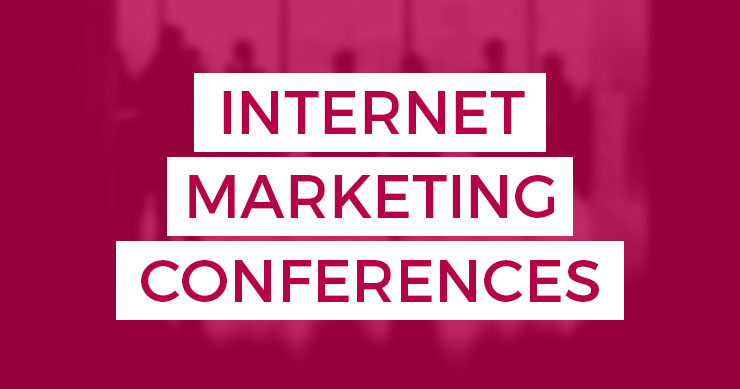 It’s day two at SMX East, and after a hearty breakfast, and a killer keynote from Richard Alfonsi of Twitter, we were off to Must Have Local Search Tactics. After spending some time in one of the warmer rooms yesterday, we are happy to report that the Local and Retail Track Room was comfortably chilly. If you missed our interview with Ted Ives yesterday, you’ll want to check it out, and read up on “Life Beyond Google” tactics.
It’s day two at SMX East, and after a hearty breakfast, and a killer keynote from Richard Alfonsi of Twitter, we were off to Must Have Local Search Tactics. After spending some time in one of the warmer rooms yesterday, we are happy to report that the Local and Retail Track Room was comfortably chilly. If you missed our interview with Ted Ives yesterday, you’ll want to check it out, and read up on “Life Beyond Google” tactics.
The local panel had some real powerhouses: Matt McGee of Search Engine Land Moderating, David Mihm of Moz, Chris Silver Smith of Argent Media, and Dana DiTomaso, the CEO of Kick Point Inc. We’ve got some fantastic local marketing takeaways from the session below, and we were able to catch up with Dana before SMX.
SMX East 2013 Day 2:
Must Have Local Search Tactics Takeaways
- David Mihm took the audience through maximizing your local citations. Citation related signals are critical as a local search ranking factor, so make sure you are consistent on-site, and with critical platforms. Every store location must have its own page on the website; establishing your canonical locations should be a priority. Localeze, Factual, Acxiom, and Infogroup are all critical tier one platforms for the local search ecosystem, so make sure your information is correct.
- David emphasized the necessity be where your competitors are, Whitespark is a paid service that will do that research for you–make sure you are doing competitive analysis with other local and national competitors. Once you have the basics, think more creatively to get those mentions and citations: become the drop off site for school donation drives, host classes or events, make sure job listings are utilized, offer discounts for local hotels, alumni associations, etc. These all provide strong, high quality citations.
- Dana DiTomaso took the audience through PPC for local. First of all, make sure you label and name in your PPC campaigns; you want to understand your data. Use radius targeting in your enhanced campaigns to take advantage of user location for competitive terms. Add the local citation extensions; it can be a competitive differentiator with your ads.
- Be unexpected with retargeting ad placements: art gallery & restaurant, bike paths & bike tune-ups, running paths & shoes, farmer’s markets & wine, museums & bookstores, festivals & hotels. Build Facebook or LinkedIn demographics for retargeting to better understand your audience.
- Chris Silver Smith talked about best practices for structured data. You need to use semantic markup to aid search engines in interpreting your site correctly, and it can increase your chances of getting rich snippets appearing with your page in the search results. You can use both hCard microformating and Micro Data/schema.org, but Chris suggests moving towards schema.org. Webmaster tools has a structured data testing tool that you need to use.
- For businesses that are closely associated with their founder, make sure you are using the author tag. That author information is a valuable trust factor for local search. Likewise, logo optimization is an underutilized tactic, and reviews and testimonials can be marked up too. Maximize categories in Google Places, and engineer a great image for the carousel in search (make sure you have images in Google Places).
Dana on Creating Local Search Tactics

Dana is an all-around local SEO bad-ass. If you aren’t already following Dana on twitter, you should be: If not for her on-point commentary on local and search marketing in general, for gems like this. We were able to get her chatting about her favorite local search tactics, Google+ frustrations, and PPC segmentation.
What is your local search tactic checklist like? Are there any tactics that you think are losing importance? Others that were formerly overlooked and need to be used more frequently?
That’s funny, because I’m kind of revising our local tactics checklist right now. I think that the big changes have come from what we call “Google+, local, places, social, etc.” in the office, because the name changes from day-to-day. I think that’s been the big change for us, the frustration in having to deal with that is pretty time consuming. It’s incredibly difficult to get a straight answer from Google, on even something as simple as claiming a page. For example, if the client has a Google+ page and then they have the Google+ local page, you have to merge the two. Not even that, just the basics of getting that Google+ local page set up is so tricky.
We have a client who we’ve dealt with this for. I think we’ve got the pin, we set it up, Google accepted it, page isn’t showing up. Call Google, they’re working on it; check back in a week. Check back a week later, still not working. You know it’s just not working, and what do you tell a client? Other than: “Well Google doesn’t have their shit together.” You can quote me on that. I think for local SEOs it’s incredibly frustrating, because it does feel like that. Google doesn’t have their shit together. How can you expect to deal with a system that’s flawed and flaky, when it’s the key to showing up well in local search results?
So, we do everything else. We do citation stuff; we do all these NAP consistency, local citations, title tags, all the stuff you’re supposed to do in local SEO. But I think the number one thing that sucks up the most amount of our time is indeed that Google+ stuff.
Then we do a lot more PPC for local, which is what I’m going to be talking about at SMX East, because I think that not a lot of people talk about PPC for local.
What are some overlooked or creative ways that businesses can think about providing local content?
I think a lot of businesses get stuck in “I can’t be bothered to spend a lot of time on this,” and content seems like a lot of work. So, they have eight different neighborhoods that they service, and they take one piece of content and do a search replace on the neighborhood name, and then put that up.
I think instead, businesses need to focus more on finding real stories that are happening in their different locations, or even if they have just one location; and just start telling those stories. I think that those stories don’t have to come from the owner of the business, or the person responsible for marketing. I think that if you check in with all of your staff on a regular basis, just find out what’s going on.
Find that interesting story: look at your reviews, and look at what people are saying about you, and if there’s a story there that can be told. I think that it’s really easy content in the sense that you’re just asking for people to talk about themselves, which they love doing. Then you publish it on the website, and people are more than happy to promote that stuff. If a business reached out to a regular and said “Hey, we really like that you had your anniversary here, can you tell us why?” Get him to write about it, tidy it up for grammar and what not, and there you go, that’s content. Of course, they’re going to share it on their Facebook and then tell all their friends about it, who are probably going to share the story as well, “Hey, isn’t this restaurant great, they really care about their customers,” it’s easy content.
When it comes to small businesses, listening to those conversations and identifying stories, are there any tools or different methods that you would encourage your clients to use to listen to that conversation and segment out from the noise? Or do you find, more often than not, that there’s not a significant conversation happening with a small business, so it’s even tough to pinpoint?
I think sometimes we find out stuff when we’re just sitting there. I told this story recently in a presentation. I was sitting in the client’s waiting room, waiting for their dermatologist. I was just sitting in the waiting room, waiting to see my client, and I heard the receptionist answer the phone and talk about how, “Yes, you can get your tattoo removed while you’re pregnant,” and I thought holy crap, I didn’t know you could do that. We should really check that as a keyword, and indeed it was. We had a tattoo removal campaign, but pregnancy tattoo removal was not specifically in there. So we added it in, which really helped with getting more impressions for their phrases.
I think that just listening to stuff like that helps, when we’re waiting at a client’s office, we have really serendipitous moments where we get to hear things that the client normally wouldn’t mention in a meeting. So, we try to drag it out of them, or we try to show up a little bit early and just listen to what kinds of phone calls and stuff that people are getting, and kind of eavesdrop on the receptionist.
I also tell clients, when you have your staff meeting, ask people, “Hey, does anybody have any fun stories from last week that they want to share.” “Did anything really cool happen? Was there a fun customer interaction? Or, what are you really excited about doing this week at your job?
I think that it’s great to generate content, but I also think from a business building standpoint, you feel like your all part of the team, and the employees also like to see their stories being reflected on the company’s website. It makes them feel like they’re part of the company too.
Google+ driving ranking? Where do you stand on the debate?
I think that the jury is still out. I really like Dr. Pete’s study on it, I thought that was very good.
Then, when he talked about the ranking factors and where they’re going, what does usurp really mean? In Cyprus Shepard’s follow up, I feel like he tried to be a little bit more conclusive than the data actually is. There is definitely something to be said for a site that has really great content, and therefore gets a lot of shares. If it ends up ranking really well, is it because it’s a really good site with really good content that probably gets lots of links? Or is it because it got shared on Google+? That’s a difficult chicken and egg situation.
I also think that maybe Matt Cutts was being a little too disingenuous when he said, “No, no, no that’s not it, and then asked him to repeat the study with different variables. Come on. Here are some hints, and I’m going to get you to repeat the study using exactly these variables and then you’re going to get the result I want you to get.” That felt a little bit sneaky, but I feel like Google+ has absolutely influenced rankings. I think that the one take away from it that’s really important to note, is that sharing your content on Google+ does mean that it gets indexed incredibly quickly. So you’re showing up in the organics that much faster, which is good if you have news based content.
Dana on PPC Segmentation
When it comes to PPC in ads, how do you do segmentation? I know that you mentioned that your presentation at SMX is going to be on local tactics for PPC. Can you give us kind of a preview of what that looked like, and when you start to think of a campaign in terms of these fun, unique stories, how does that help with targeting specific groups?
What I’m going to be talking about has actually ended up being basically every interesting local tactic we’ve used in the last few months. I think what’s really interesting and what we’re doing right now is a campaign for the city of Edmonton. We’re using the new enhanced radius targeting, specifically for a bunch of recreation centers to push their classes. They have yoga and spin, and at some places they have swimming classes. So, if you live within five kilometers of the rec center, you’re seeing the ad for the rec center closest to you.
We just started the campaign a few weeks ago, and it’s going exceptionally well so far. You’re getting the rec center that’s right for you. The click-through rate on mobile devices is double what it is on desktop. The click-through rate for some of the ads like yoga, which is a pretty competitive craze here—I imagine it is in most places. We’ve even got as high as 4% and 5% click-through rate on some of the ads, and we’re using yoga broadly to start off with. It’s not the most precise keyword in the world right now, it’s pretty lazy, and we’re still getting a really high click-through rate. So, we’re impressed at what you can do in terms of radius segmentation.
Dana on “Not Provided” & the Future of Reporting
Google now seems to be making every single user go through a redirect to secure a search, which means we’ve now lost keyword data within analytics. I imagine that as a company that does both paid and organic search, it’s a little bit easier because you have access to those paid campaigns for keyword data. How much do you rely on paid search to help inform organic efforts?
I don’t know, for us it’s all part of one campaign. So, we’re thinking about the paid keyword data and what’s played really well, but often what we’re also thinking about is making sure that we’re just showing up, twice on the page. So, if it’s a phrase that the client is ranking well for, we’ll still run the ad word, just maybe with a lower bid.
Because I find that, and I think other people have proven this, too, that the click-through rate is better if you have PPC and organic on the same page than if you just have one or the other. Because they think, “Oh wow, this company’s all over here, they must be really awesome.” So, the ideal world is you have ad words and a places map marker come up, and an organic search presence, but you can’t always do that. At least you can try to get two out of three.
As for the not provided stuff, we’ve just stopped looking at organic data too deeply in the reports we give to our clients. I’ll still report on keywords, in the sense that I’ll look at the keyword data, and will yank out what is interesting. So, if there was a particularly interesting organic search term that came up, then we’ll say to the client, “Hey, this was really interesting, we might want to consider pushing this a little bit further.” But in terms of reporting on the actual keywords and keywords that converted, there is very little that we can do now. We were actually trying to phase out most of our clients from reporting on that data now anyways. From our client’s perspective, we’ve never focused heavily on reporting on that. The reporting that they get from us is based on how many leads they’ve got coming in, and what their cost per lead is, and what their cost per sale is; if we can derive that kind of information, if we have that ability to link it all up. So, from our perspective, as long as they’re still hitting their targets on leads and sales, then what does it matter if you know the exact keywords?
Can you talk a little bit more about reporting and showing ROI without that keyword data?
We try to establish a baseline. What are is the client doing now? It helps if the client hasn’t worked with an SEO agency before, to be honest. Because then they’re not asking us questions like “Well, how many links did you build for me.” They’re not ruined by the previous bad agency who was focused on the wrong matrix. Without that experience, we can say to them, “Tell us how much you want to increase your business by this year,” and “Can you handle that increase in business,” and “Let’s talk about your business plan,” and “Let’s talk about how many things you need to sell.” We have a homebuilder client, for them it’s really easy, did the home sell, yes/no? For them, they track when people walk into a show home, so we know how many walk-ins they got in the show home. We know how many people filled out the form from their website.
Perhaps we can say okay, so we know that you had x number of visitors at your website, and you had x number of visitors to your show home. Let’s take that as a percentage, just to provide us with a baseline. Then, looking at the last 12 months, before you started working with us, we can see that fairly consistently you have a certain percentage of people who walk into your show home shown as a percentage of website visitors. That percentage is very consistent. So now we know that if we increase their website traffic we should be able to drive x number more people into their show homes. So, we tell them this theory, and then we do our work and lo and behold the theory held out. Now we’ve managed to increase their website traffic by about 30%. We can see that we now have 30% more people walking into their show homes. Now, we know that not everybody who walked into the show home visited the website, but we can also see a pretty strong co-relation between increased interest in the website and increased interest in people walking into the show home. And then their sales team takes it from there.
But the other thing that we’ve seen is we also have data on the number of people who walk onto the show home versus the number of people who put in offers, and that conversion rate has been increasing, which means that we are helping to drive more targeted traffic to the show home than they were getting. They were getting a lot more tire kickers before, and now they’re getting motivated people.
Dana on Local for Big Businesses

Local tactics for the larger corporation, or multi-city businesses: what are some of the tactics big business should be using?
I think big businesses need to get themselves better connected with the areas that they serve on the local level. That’s one area where a little company can kick a big companies butt, is by being that connected.
Why do you feel that your local coffee shop cares about you? Well, because they know your name and everything else. But at the same time, they actually are involved in the neighborhood. I know that some big companies will just plunk down a store, and feel good about it, but other brands really care.
For example, in Canada you have Home Hardware, which is a national brand, and they do a really good job. What they’ve done is that they’ve basically purchased up all the mom and pop hardware stores across Canada, and obviously, their big competitors are Home Depot and Rona, which is, again, Canadian. So the options are the big box style hardware stores, and Home Hardware, which are typically smaller, sometimes in urban areas. Sometimes they’re the only hardware store in a very small town.
What they do is they is they tell the stories of the owners, like, here are the owners, and they’re part of the family, and this is where they live. This is why they care about the community. They really encourage them to make videos, and talk on social, and be really a part of the community. They don’t necessarily have a corporate policy. They don’t have somebody from on high saying well this is the stuff that you have to tweet, or this is the stuff that you have to Facebook, or you used you’re/your incorrectly. It actually makes it more authentic, as much as I hate bad grammar. It makes it more authentic in the sense that this is actually the store owner typing the stuff into Facebook right now. And maybe they’re not the savviest social media user in the world, but at the same time I think that it gives it an authenticity that people respect and it makes them feel like they’re more connected to the local community. So, even though Home Hardware might be more expensive than the big box store, or they don’t have the best selection necessarily, people feel really good about it, and they’ll shop there because they feel like they’re supporting the community, even though Home Hardware is actually a national chain.
What SMX session are you looking forward to the most, and why?
Prioritizing Your Search Marketing Efforts. I think that that’s really interesting, because one of the things that I personally find difficult about conferences, is that you come back and you’re like, I have eight thousand new things to try. I would love to hear from veteran marketers on how they prioritize what they do. I think you can always pick up some good tricks from that. I mean there’s lots that I’m interested in, but I saw that one in particular, because I can’t believe that’s happening at the same time as me. I’m also interested in “Choosing a Digital Marketing Agency,” just because I want hear what people say.


